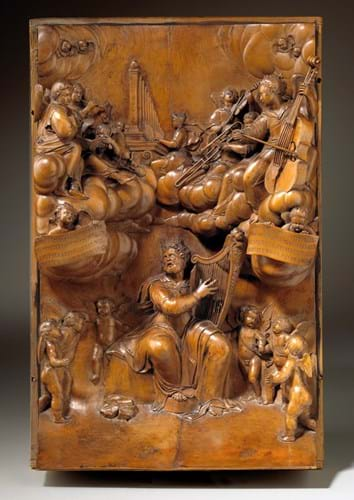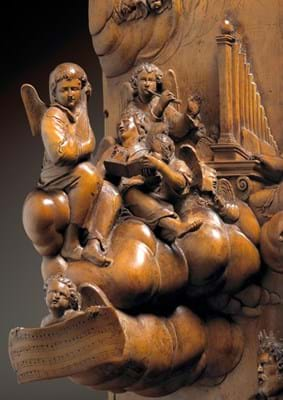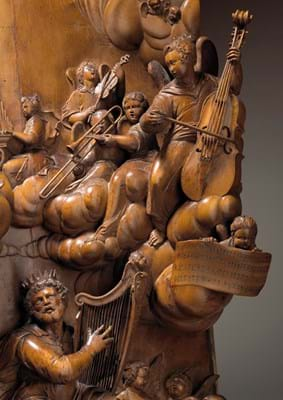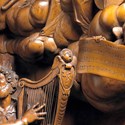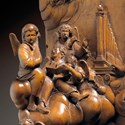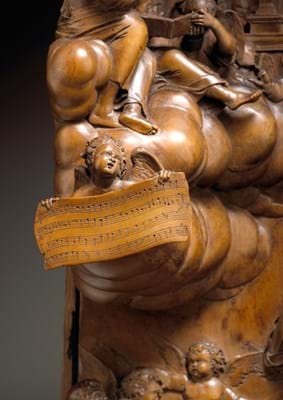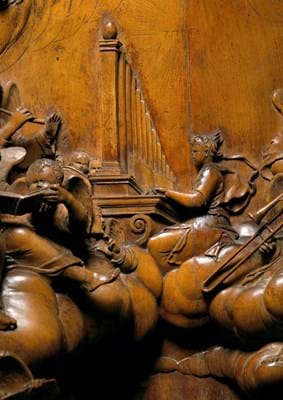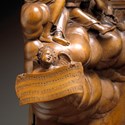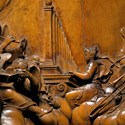The Leeds gallery has offered to withdraw it from sale if Fairfax House can raise the necessary funds to acquire it.
The house, which is run by a conservation charity, has already raised £240,000 towards the acquisition with grants from the Heritage Lottery Fund, the Art Fund and the Arts Council England/V&A Purchase Grant Fund. It is now seeking donations from the public to raise the remaining amount.
The 14.5 x 9.5in (37 x 24cm) panel carved into a heavenly concert led by King David playing a harp was made during a formative three-year period that Gibbons spent in York as a young man, perfecting his craft. It is currently on show at the Made in York exhibition at Fairfax House.
The panel was made when Gibbons was just over 20 years old and the American carver and writer David Esterly described this work as “a key piece of evidence about the early trajectory of Gibbons’s career”.
It is the earliest surviving sculpture by the artist widely regarded as the finest wood-carver working in England in the later 17th and 18th centuries. He has even been described as Britain’s ‘Michelangelo of Wood’.
The King David panel has provenance to the Yorkshire Barwick and Fairfax families, giving it a strong connection to Fairfax House, but it was later owned by the leading sculpture and works-of-art dealer Cyril Humphris, and sold in the sale of his collection at Sotheby's New York in 1995.
The buyer at the auction was Sotheby’s owner A Alfred Taubman and it then reappeared at the auction of the latter’s collection in January last year where it sold for $162,500 (£114,000) including premium against a $250,000-350,000 estimate.
If it were to be acquired by Fairfax House, the panel would be the first work by Gibbons to enter the collection and, according to a press release sent out by the property, would “become a lynchpin of a collection that cherishes Britain's legacy of exquisite craftsmanship in the 18th century”.
It added: “The carving would become a focal point of the house’s exhibits exploring the wealth of the pioneering artists, craftsmen and thinkers who lived and worked in York.”
Fairfax House is a Georgian townhouse in Castlegate, York which was transformed by the architect John Carr after it was acquired by Charles Gregory, the ninth Viscount Fairfax of Emley, in 1759.
Director of Fairfax House Hannah Phillip said: “Our vision is that through this appeal, Fairfax House will secure a lasting legacy for the nation and to unlock the door to an object that has remained hidden away in private collections throughout its life.
“Above all, we want to bring awareness to the extraordinary genius and skill of Grinling Gibbons, and show what extraordinary things could be created from the medium of wood by the hand of one individual.”
Donations can be made via the Fairfax House website.


